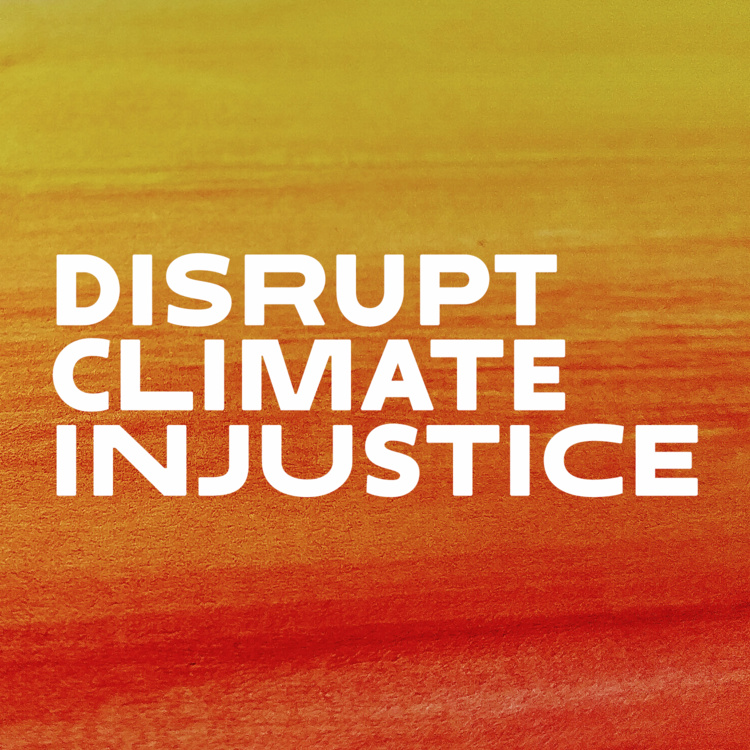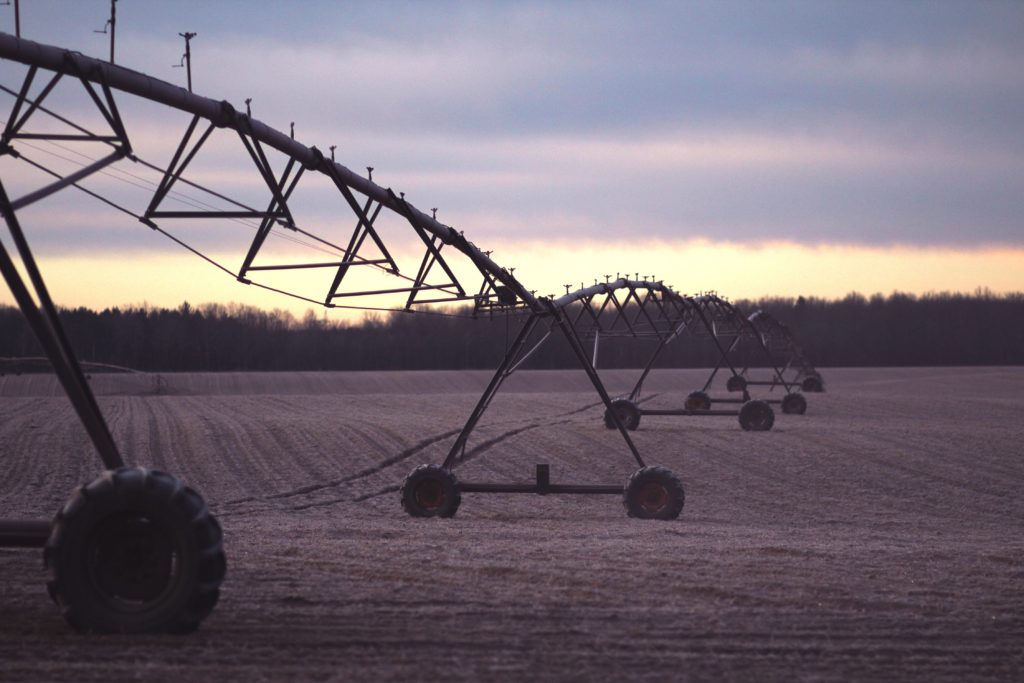
Our Climate Curriculum Disruption series will highlight projects completed by New School students during our week-long, university-wide curriculum disruption, interrupting “business as usual” and turning our attention to climate change and its implications, particularly the unequal and devastating impacts on the most vulnerable and least responsible communities around the globe.
Sustainable Agriculture: The Slow Food Movement
By Nicole Busch
Today Americans spend less than 10% of their income on food, and an even smaller amount of time to prepare it. Industrialization is still very prominent in the United States. When this era came about, with it came chemicals, fertilizers and pesticides. As industrial farms grew, smaller farms were put out of business. Each year more and more chemicals have to be used because the crops become resistant. Though this produce can be purchased for a very low cost, what is the cost that our bodies pay when we eat it? Sustainable agriculture is a topic that is becoming more and more popular. With more awareness around climate change and the environment, people are also starting to watch what food they put into their bodies, and where it was sourced. Along with pro-environment movement, consumers want those practices to grow their food meet environment friendly standards, and now farmers are beginning to change the way they grow their foods. The consumers are showing that they care about where their food comes from, and want to make healthy changes for themselves and future generations. We have seen not only what industrialization has done to our bodies, though what it is also doing to our environment. We use an extraordinary amount of fossil fuels to keep the machinery running, among other things. I will examine sustainable agriculture and the slow food movement, which is becoming increasingly more popular.
Over the years there have been many ramifications we have seen from cheap and quick food. Author, Michael Pollan has introduced us to the idea that our “new” way of eating has a higher chance of threatening our food safety: “Although cheap food is good politics, it turns out there are significant costs—to the environment, to public health, to the public purse, even to the culture—and as these became impossible to ignore in recent years, food has come back into view.” (Pollan) There seems to be a very significant and high cost to the practices we have established. The philosophy around slow food is three fold: “Good, clean, and fair. Good: quality, flavorsome and healthy food. Clean: production that does not harm the environment. Fair: accessible prices for consumers and fair conditions and pay for producers.” (Slow Food USA) This movement does a great job of connecting the farmers to the consumer. Chemicals have also altered our food so the flavors may be different as well. This brings us back to a more native eating style. The movement also establishes the thought that everything we grow and eat should not harm the environment. There are some consumers that do not realize how much the processed food and unethical farming practices can harm our environment. Slow food will guarantee a better future for us and our children.
When the founder of slow food, Carlo Petrini was “Walking in Rome one day, he found himself gazing at the splendid Spanish steps when the overwhelming odor of French fries disturbed his reverie. To his horror he discovered that not twenty meters along the piazza loomed the famous golden arches of a well-known food chain.” (Leitch, 410) That was the moment the Slow Food Movement was born! He realized there needed to be more protection around cultural traditions, and more light needed to be shed on a healthier and more sustainable way of eating. He wanted people to visit Italy to try the food, and not to have some franchise fast food place. After all, people do plan vacations around eating. He chose the snail icon because it was a slow moving food!
Slow Food eventually took on a more political agenda. He created an “endangered foods” campaign, which was designed to help protect certain products in need of protection. Petrini also did an excellent job of doing what he could to bring awareness to foods of other cultures. He helped to make a lot of places tourist destinations by showcasing their unique and exotic food. In 1996, the movement declared that Italy’s lardo di Colonnata (a cured pork fat) was one of the top ten endangered foods, and it thrust that town into the spotlight and created a new found tourism for that area. People are now able to make a living from lardo production. Since the slow food movement came onto the scene in the early 90’s there are several restaurants and food stores that have come on board to support the sustainable systems. When consumers walk into a store that supports the movement, they feel better about their purchase, and may even spend a higher price for the peace of mind knowing that their food was created in a sustainable environment. It is two-fold in that it shows that the companies care about the consumers, and also care about helping to create sustainable practices that are good for the environment. Downtown in NYC an establishment called Eataly, are big supporters and will also share the story of your food with you. It is the extra special touch that is making this movement all the more personal to its consumers. As this movement goes forward there are more restaurants willing to participate in sustainable practices.
Dan Barber is the author of the book “The Third Plate”, and operates and owns an organic farm in upstate New York, with a farm-to-table restaurant both upstate and in New York City. He encourages people to start “looking at the great food cultures of the world. The traditional cuisines of Asia and North Africa, not to mention France and Italy, are based on rice, wheat, legumes, vegetables, spices and smatterings of all cuts of meat.” (Slow Food USA) That is exactly what the slow food movement is doing. It is doing a great job of helping us to become aware of the whole world of options we have. We are a very heavy meat culture in America, and Barber thinks that in our future we will steer away from the heavy meat dishes and really embrace the vegetables. A lot of the action starts with the consumer, and the power they have to make changes and decisions. Dan also encourages that we should be looking at where all of our food comes from, and asking deeper questions as to if chemicals were used, and what kinds of animals are being used, and how the animals are being treated? Baber also feels that farmers can take an initiative to make better choices and pay more attention to how our ancestors used to farm. Barber’s book also supports the Slow Food Movement and sustainable agriculture in highlighting some very elite and high-end food and farms around the world. In one chapter visiting Veta La Palma, which is a fish farm in Spanish, amazes him. “A place like Veta La Palma broadens the definition of ‘environmentalist’ (and ‘chef’) even further. It makes you realize that healthful ecologies are determined in large part by ecologies that surround them. How is your land healthy if the water feeding it is not clean? Every farm is intimately linked to the larger ecosystem”. (Barber, 247) The word fish farm in American is rarely associated with something sustainable. Unlike the image they portray in America, this one is completely sustainable on its own. It would benefit farmers to take note of how this system works together to create a sustainable environment all on its own.
Slow Food has been taking small but mighty strides to make a bigger impact in our culture. Over the years Slow Food has branched out into different areas to create awareness. They have begun to successfully educate children on healthy eating practices, which is key to help establish healthier eating practices for our adults of the future. They have a variety of workshops and curriculums schools can use to show kids about healthy eating, how to cook, and growing their own food. As we bring these programs and ways of eating into our communities, it is shown that a whole community who is growing healthy foods, and making better choices collectively will be more likely to be successful. They have each other as a motivator. As we look into the future of slow food. Carlo Petrini recently made a statement of his beliefs of the future of this movement. “It is imperative that we be open and inclusive. We must ensure that our movement’s ideas can walk on the legs of others, because they are right and because the war is still far from being won. This is why the organizational challenge will be to encourage local action, to give everyone the strength and the cultural and coordination tools to become active subjects and actors of change. Only in this way we can truly shape the future of food.” (Slow Food USA) The practice of slow food is something we must practice everyday. Collectively as consumers we are able to make this change a reality. Slow food is much more than a movement; it is a lifestyle that is able to create global sustainability. We first have to make the changes to the way we grow and eat food. With that in mind the rest of the puzzle will come together.
Works Cited
- Leitch, Alison “Slow Food and the Politic of ‘Virtuous Globalization’”. Food and Culture: A Reader. Taylor and Francis, 2012. (pg 410)
- Pollan, Michael “The Food Movement, Rising” The New York Review of Books 10 June. 2010. Web. 21 February 2018. http://www.nybooks.com/articles/2010/06/10/food-movement-rising/(Links to an external site.)Links to an external site.
- Slow Food USA. “An Interview With Dan Barber” 21 September. 2015. Web. 20 February. 2018. https://www.slowfoodusa.org/blog-post/an-interview-with-dan-barber(Links to an external site.)Links to an external site.
- Slow Food USA. “Carlo Petrini on the Future of the Slow Food Movement” 13 February 2018. 21 February 2018. https://www.slowfood.com/carlo-petrini-future-slow-food-movement/(Links to an external site.)Links to an external site.
- Barber, Dan. The Third Plate. New York: Penguin Books. 2014. (247)


Comments are closed.